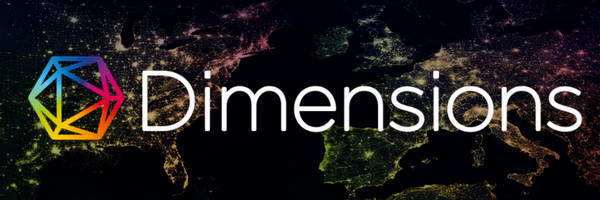Artificial Intelligence (AI) sebagai Mitra Pedagogis: Strategi Penguatan Kemampuan Visual-Spasial Mahasiswa dalam Pembelajaran Seni Rupa
Artificial Intelligence (AI) sebagai Mitra Pedagogis: Strategi Penguatan Kemampuan Visual-Spasial Mahasiswa dalam Pembelajaran Seni Rupa
Abstract
The development of digital technology has driven significant transformations in visual arts education, including in the way learning is delivered and developed. One prominent innovation is the use of Artificial Intelligence (AI) as an adaptive, data-driven learning tool. This research aims to systematically explore how AI can be pedagogically integrated to support the development of students' visual-spatial abilities in the context of fine arts education. Using a descriptive qualitative approach based on literature review, this study examines the contribution of AI to transforming arts learning, the urgency of developing visual-spatial intelligence, and strategies for integrating AI to strengthen students' spatial abilities. The results indicate that AI has the potential to be a creative partner that expands visual exploration, supports personalized learning, and provides immersive learning environments through technologies such as three-dimensional simulations and augmented reality. However, the effectiveness of AI implementation depends heavily on reflective and ethical pedagogical design to remain aligned with the humanistic values of arts education. This study emphasizes the importance of designing technology-based arts learning that is not only technical, but also contextual and transformative
References
Black, J., & Chaput, T. (2024). A Discussion of Artificial Intelligence in Visual Art Education. Journal of Computer and Communications, 12(05), 71–85. https://doi.org/10.4236/jcc.2024.125005
Cotroneo, P., & Hutson, J. (2023). Generative AI tools in art education: Exploring prompt engineering and iterative processes for enhanced creativity. Metaverse, 4(1), 14. https://doi.org/10.54517/m.v4i1.2164
Das, S., & Kundu, R. (2024). The Ethics of Artificial Intelligence in Creative Arts: A Comprehensive Review. Interdisciplinary International Journal of Advances in Social Sciences, Arts and Humanities (IIJASSAH), 1. https://doi.org/DOI:10.62674/iijassah.2024.v1i1.003
Ernawati, E. (2020). KECERDASAN SPASIAL DALAM MEMAHAMI TRIMATRA: STUDI STRATEGI PEMBELAJARAN MATA KULIAH NIRMANA 2 (TRIMATRA). PRASI, 15(01), 10. https://doi.org/10.23887/prasi.v15i01.24118
Gürefe, N., Sarpkaya Aktaş, G., & Öksüz, H. (2024). Investigating the Impact of the AI-Supported 5E (AI-s5E) Instructional Model on Spatial Ability. Behavioral Sciences, 14(8). https://doi.org/10.3390/bs14080682
Harry, A. (2023). Role of AI in Education. https://injurity.pusatpublikasi.id/index.php/in
Heaton, R., Joo Hong, L., & and Chen, V. (2024). AI art education - artificial or intelligent? Transformative pedagogic reflections from three art educators in Singapore. Pedagogies: An International Journal, 19(4), 647–659. https://doi.org/10.1080/1554480X.2024.2395260
Holmes, W., Bialik, M., & Fadel, C. (2019). Artificial Intelligence in Education. Promise and Implications for Teaching and Learning. https://www.researchgate.net/publication/332180327
Kaan, A., & Tarhan, T. (2020). Art & Science: Visual arts training improves visuo-spatial ability and mediates STEM success UNIVERSITY OF CHICAGO. https://doi.org/https://doi.org/10.6082/uchicago.3916
Kamali, J., Alpat, M. F., & Bozkurt, A. (2024). AI ethics as a complex and multifaceted challenge: decoding educators’ AI ethics alignment through the lens of activity theory. International Journal of Educational Technology in Higher Education, 21(1). https://doi.org/10.1186/s41239-024-00496-9
Mayo, S. (2024). Co-creating with AI in Art Education: On the Precipice of the Next Terrain. Education Journal, 13(3), 124–132. https://doi.org/10.11648/j.edu.20241303.15
Monjoree, U., & Yan, W. (2024). AI’s Spatial Intelligence: Evaluating AI’s Understanding of Spatial Transformations in PSVT:R and Augmented Reality. https://doi.org/https://doi.org/10.48550/arXiv.2411.06269
Park, Y. S. (2023). Creative and Critical Entanglements With AI in Art Education. Studies in Art Education, 64(4), 406–425. https://doi.org/10.1080/00393541.2023.2255084
Pertiwi, A. B. (2015). KECERDASAN SPASIAL SEBAGAI PENUNJANG PENGEMBANGAN KREATIVITAS MAHASISWA DESAIN GRAFIS DALAM PEMBELAJARAN NIRMANA. http://repository.widyatama.ac.id/handle/123456789/5877
Porayska-Pomsta, K., Holmes, W., & Nemorin, S. (2024). The Ethics of AI in Education. https://doi.org/10.48550/arXiv.2406.11842
Sáez-Velasco, S., Alaguero-Rodríguez, M., Delgado-Benito, V., & Rodríguez-Cano, S. (2024). Analysing the Impact of Generative AI in Arts Education: A Cross-Disciplinary Perspective of Educators and Students in Higher Education. Informatics, 11(2). https://doi.org/10.3390/informatics11020037
Sahnir, N., & Yatim, H. (2023). PROSIDING SEMINAR NASIONAL Pengenalan Teknologi Artificial Intelligence (AI) dalam Meningkatkan Pengalaman Belajar Seni di Era Digitalisasi Pendidikan. Https://Journal.Unm.Ac.Id/Index.Php/Semnasdies62/Index. https://doi.org/https://doi.org/10.59562/semnasdies.v1i1.811
Sari, A., Dahlan, Tuhumury, R. A. N., Prayitno, Y., Siegers, W. H., Supriyanto, & Werdhani, A. S. (2023). Dasar-Dasar Metodologi Penelitian. CV. Angkasa Pelangi.
Sugiyoono. (2013). Metode Penelitian Kuantitatif, Kualitatif, Dan R&D. CV. ALFABETA.
Wijayanto, B., Sutriani, W., & Luthfi, F. (2020). KEMAMPUAN BERPIKIR SPASIAL DALAM PEMBELAJARAN ABAD KE-21. Jurnal Samudra Geografi, 3(2). https://ejurnalunsam.id/index.php/jsg/article/view/2495
Yusuf, A. M. (2017). METODE PENELITIAN: KUANTITATIF, KUALITATIF, DAN PENELITIAN GABUNGAN. PT Fajar Interpratama Mandiri.
Zaenuddin, I., & Riyan, A. B. (2024). Perkembangan Kecerdasan Buatan (AI) Dan Dampaknya Pada Dunia Teknologi. In Jurnal Informatika Utama (Vol. 2, Issue 2).
Zed, M. (2008). Metode Penelitian Kepustakaan (3rd ed.). Yayasan Obor Indonesia.








